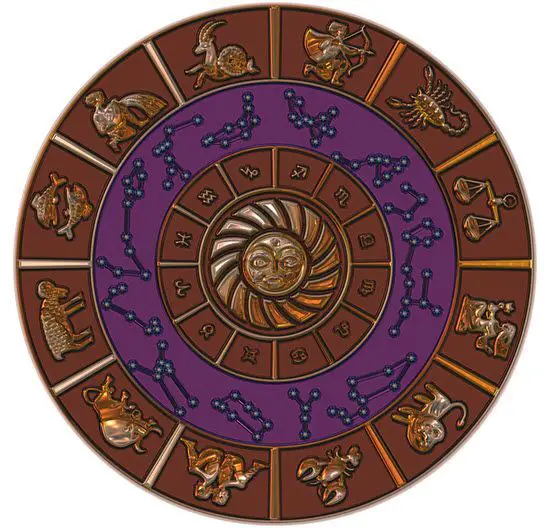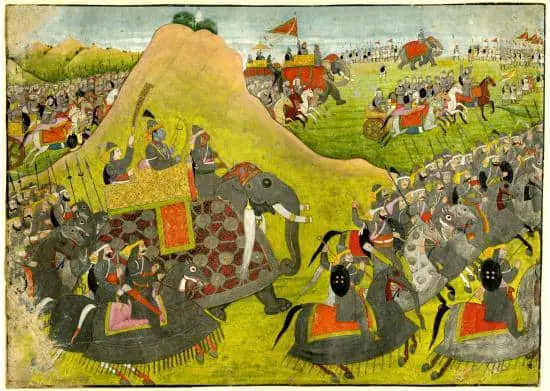Mundan Ceremony or Tonsuring is a common Hindu practice. It is also called Chaula or Choodakarana. Sanatan Dharm, or Hinduism, has 16 sanskaras or rituals that one is supposed to perform during one’s lifetime. Mundan sanskar is one of them.
There are religious and scientific reasons behind it, which we will explain further in this article. They are usually performed in holy or spiritual places. The Mundan ceremony is an event of love, celebration, and immense joy. The Mundan Sanskar is generally performed by ages 1 to 3.
Many religions perform the ritual of shaving a baby’s head after birth. Not only Hindus but Muslims, Jews, Mongolians, Polish, etc perform Mundan or tonsure. The tradition of shaving baby hair is common in parts of Asia and some Latin American countries. While the ceremony’s names may differ, it is performed in several religions and countries worldwide.

Table of Contents
What is Mundan Ceremony or Choodakarana?
Mundan is a popular Hindu tradition in India where a child’s head is shaved by 1 to 3 years of age. These hairs are offered to the holy river Ganga or God. Completely shaving off a child’s hair is essential as it holds both religious and scientific significance. The Mundan Ceremony is often performed in the presence of a priest. It takes place on an auspicious day, according to the Hindu Calendar.
Cultural Belief Behind Mundan
It is believed in Hinduism that one takes 84 lac births before being born as a human. By shaving off the first natural hair of the baby and immersing it in the holy river Ganga, we purify them from the thoughts, impurity, and karma of the past life.
It is believed to be a gesture of purification of previous yonis and freedom from the past. It also gets the baby rid of evil eyes or evil presence. It is also believed that tonsuring blesses the child with a healthy and long life. It is believed that the impurities during the pregnancy are also removed by shaving off the hair.
Shaving off the head reduces the headache and heaviness when a baby is teething. It also promotes better growth. A child is more likely to live a healthy life if his hair is shaved after birth. It also keeps the baby’s head and body cool, especially during summer.
The Vedic belief of shaving hair with proper vidhi helps the child gain intelligence and strength from God. Ages 1, 3, 5, and 7 are considered the most auspicious for the Mundan or Choodakarana. Some common religious destinations in India for Mundan are Varanasi, Amritsar, Haridwar, Tirupati, Rishikesh, Shirdi, Kedarnath, Bodhgaya, etc.
Scientific and Health Reasons for Mundan
A newborn’s skull comprises six bones separated by spaces, allowing for flexibility during birthing. This facilitates the baby’s passage through the birth canal and ensures a normal delivery. Over 6-7 weeks to 2 years, these gaps gradually close. Given this developmental stage’s fragility, handling a baby’s head with gentleness is recommended.
Consequently, after shaving the head, exposing the baby to sunlight enables the absorption of Vitamin D-rich sunlight that helps in the natural closure of the spaces between the skull bones.
Hair Growth is often quite scattered in children; shaving off the hair usually results in even better hair growth. The tonsure also helps in relieving pain during teething. Shaving off hair may also improve blood flow in the head, improving brain functioning.
Another reason for Mundan is that it opens the pores in the baby’s head, improving eyesight and other baby senses.
How is Mundan Performed?
A specific date and time are selected for the Mundan, which is subh or auspicious for the Mundan ceremony. This muhrat is set by the priest. It is usually performed on river banks; some people perform the ceremony in temples or even at home in the priest’s presence. Havan and chants may also be performed.
The hair that is shaved off must not be thrown anywhere. Each strand of hair should carefully be collected and offered to God or immersed in the holy Ganga river. Then, the child’s head is washed with Ganga jal (holy water from the river Ganga), and a turmeric and sandalwood paste is applied to the head to heal any cuts.
This is done as haldi or turmeric, which has excellent antiseptic properties, and sandalwood or Chandan, which gives a cooling effect and prevents future infection. Some people also apply pure coconut or almond oil for the same reason.
Many additional rituals may also be performed by different sub-castes having some or the other significance. The most essential part of any ceremony is to cherish every ritual performed for the baby with love and joy.
Tips for Safe Mundan
Make sure the baby is well-fed and has had proper sleep/rest. Otherwise, he may be restless and cranky during the Mundan and might get hurt by the blade.
Hire an experienced barber who knows how to shave off the hair smoothly without even slightly hurting the child.
Ensure that the barber uses clean and sterilized instruments for shaving the baby’s head to prevent infection.
Give the child a proper bath, as hair strands might get stuck on the skin. They can enter the eyes, nose, and other such openings and may cause infection.
Apply antiseptics like turmeric, honey, garlic extract, certain oils, etc, to heal the cut, if any. Babies have sensitive skin and might get a little cut or two. Ensure to take care of it using preferably natural antiseptics so it heals faster.
Also, make sure that there isn’t a mirror nearby, as the sight of the tonsure may scare him and make him cry.
The Mundan ceremony is meaningful and valued in most Hindu families, which is why, even today, many families include it in their traditions. It has benefits for the child, not just spiritual but scientific ones. Just make sure you follow all the steps and be careful to make it a safe and memorable occasion for the family.
We hope you liked our article on “Mundan.” Please share it with friends and family, encouraging them to celebrate the most beautiful traditions.




